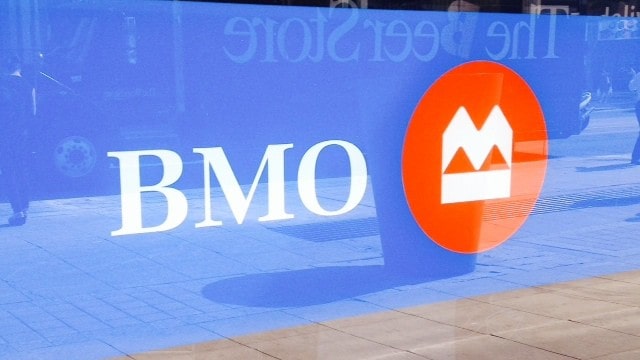Bank of Montreal (TSX:BMO)(NYSE:BMO), Canada’s fourth-largest bank, announced its fiscal 2018 first-quarter earnings results this morning, and its stock has responded by falling over 1.5% at the open of trading. Let’s break down the results and the fundamentals of its stock to determine if this weakness represents a long-term buying opportunity or a warning sign.
The results that failed to impress the market
Here’s a quick breakdown of 10 of the most notable statistics from BMO’s three-month period ended January 31, 2018, compared with the same period in 2017:
| Metric | Q1 2018 | Q1 2017 | Change |
| Net interest income | $2,546 million | $2,530 million | 0.6% |
| Non-interest income | $3,132 million | $2,875 million | 8.9% |
| Total revenue | $5,678 million | $5,405 million | 5.1% |
| Total revenue, net of claims, commissions, and changes in policy benefit liabilities (CCPB) | $5,317 million | $5,401 million | (1.6%) |
| Adjusted net income | $1,422 million | $1,530 million | (7.1%) |
| Adjusted earnings per share (EPS) | $2.12 | $2.28 | (7.0%) |
| Total assets | $727,909 million | $692,384 million | 5.1% |
| Deposits | $475,565 million | $474,637 million | 0.2% |
| Net loans and acceptances | $373,367 million | $365,033 million | 2.3% |
| Book value per common share | $59.78 | $59.51 | 0.5% |
Important note about BMO’s decline in earnings
It’s important to note that BMO’s 2017 adjusted net income included a net gain of $133 million from its sale of Moneris US, and this negatively impacted its adjusted net income growth by approximately 9% in the first quarter of 2018.
What should you do now?
It was a solid quarter overall for BMO, driven by “good loan and deposit growth and the benefit of higher interest rates,” but nothing in the press release really stood out as impressive, so I think the drop in its stock can be considered warranted; that being said, I think the drop also represents a very attractive entry point for long-term investors for two fundamental reasons.
First, it now trades at even more attractive valuations. BMO was already undervalued before the earnings release, and its stock now trades at just 11.4 times the consensus EPS estimate of $8.58 for fiscal 2018 and only 10.7 times the consensus EPS estimate of $9.15 for fiscal 2019, both of which are inexpensive given the strength and stability of its business model; these multiples are also inexpensive given its current earnings-growth rate and its estimated 5.8% long-term earnings-growth rate.
Second, it’s a dividend superstar. BMO currently pays a quarterly dividend of $0.93 per share, representing $3.72 per share annually, which gives it a yield of about 3.8%. Foolish investors must also note that the financial giant’s recent dividend increases, including its 3.3% hike in December, has it on track for fiscal 2018 to mark the seventh straight year in which it has raised its annual dividend payment, making it both a high-yield and dividend-growth play.
With all of the information provided above in mind, I think all Foolish investors should strongly consider using the post-earnings weakness in BMO’s stock to initiate long-term positions.









